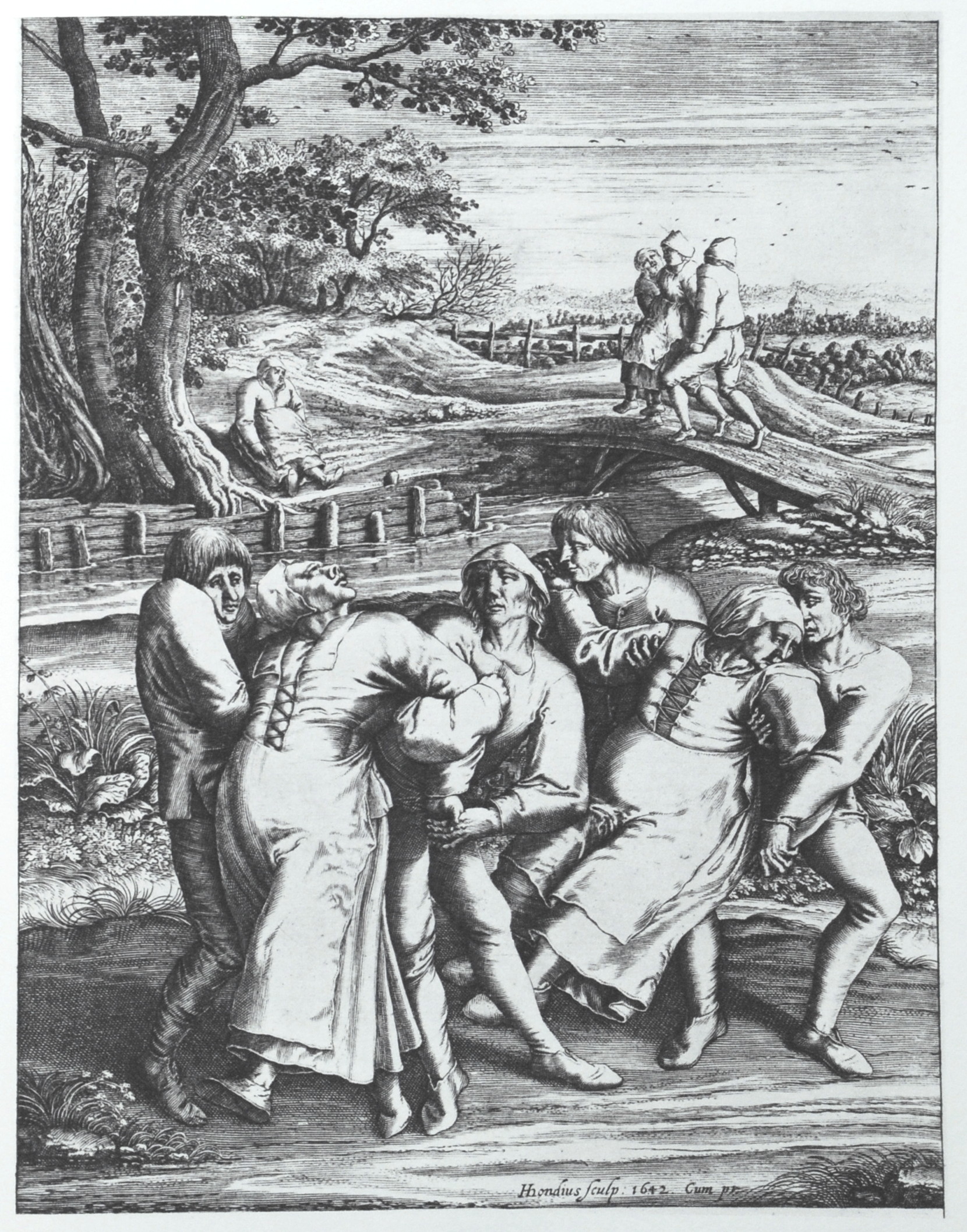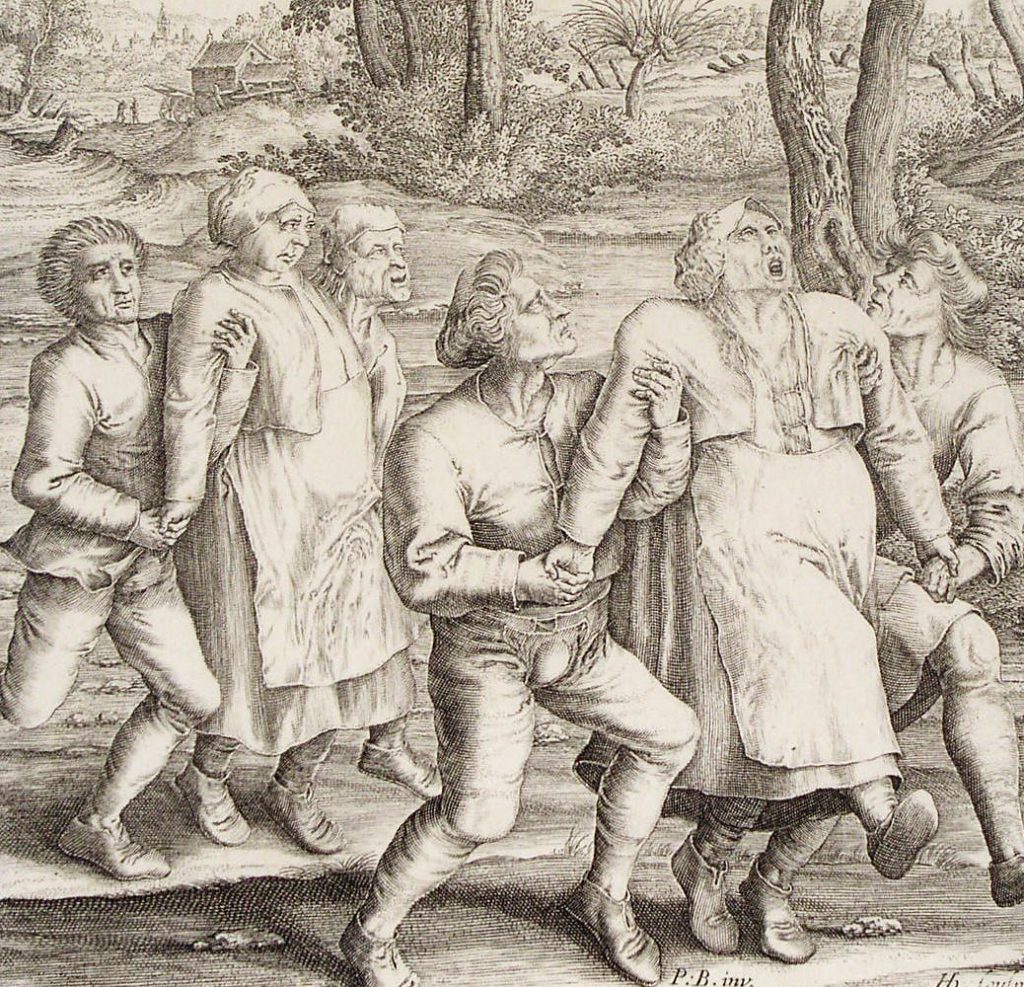Picture this – a warm July morning in 1518, when a woman named Frau Troffea stepped into the streets of Strasbourg and began to dance. Nothing unusual, except she wouldn’t stop! Days turned into weeks as she twirled and swayed without rest, launching one of history’s most bewildering phenomena.
What started as one woman’s mysterious dance soon erupted into a full-blown crisis. Within weeks, nearly 400 citizens joined this involuntary dance party, their feet moving to an unheard rhythm that wouldn’t let them rest. The streets of Strasbourg transformed into a grotesque carnival where dancers moved until they dropped – literally!

Image credit: Dancing plague of 1518
The local authorities’ response would make any modern crisis manager cringe. Instead of stopping the dance, they encouraged it! Professional dancers were hired, musicians played their hearts out, and stages were built. But this decision proved catastrophic. More people joined the frenzy, dancing day and night until exhaustion claimed them. Some suffered strokes, while others succumbed to heart attacks from the relentless movement.

Image credit: The Dancing Plague of 1518
Medieval minds struggled to make sense of this bizarre outbreak. Many believed St. Vitus, the patron saint of dancers, had cursed them. The fear of divine punishment only added to the hysteria, pushing more people into the deadly dance. Meanwhile, physicians of the time blamed it on “hot blood,” a diagnosis that seems almost comical today.
The Real Culprit
Modern theories paint a different picture. Some experts point to mass hysteria, triggered by the extreme stress of famine and disease that plagued Strasbourg. Others suggest the dancers might have eaten bread contaminated with ergot, a hallucinogenic mold. Yet the true cause remains as mysterious as the dance itself.
The Dancing Plague finally ended in September 1518, when the remaining dancers were taken to a mountaintop shrine to pray for salvation. While similar outbreaks occurred across Europe, none matched the scale or deadliness of Strasbourg’s dancing fever. This peculiar episode stands as a testament to humanity’s susceptibility to mass psychological phenomena – and perhaps serves as a warning about how easily panic can spread through a community.
References:
What Was the Dancing Plague of 1518? – link
The Dancing Plague of 1518 – link
Dancing plague of 1518 – link
Categories: Do you know, Historical Mystery, Medieval History, Unexplained Phenomena, Urban Legends
Tags: Dancing Plague, historical mystery, Mass Hysteria, Medieval History, St. Vitus dance, Strasbourg, unexplained phenomena
Religion: Christianity
Country of Origin: France, Germany, Netherlands, Switzerland
Topic: Historical Mystery
Ethnicity: European

